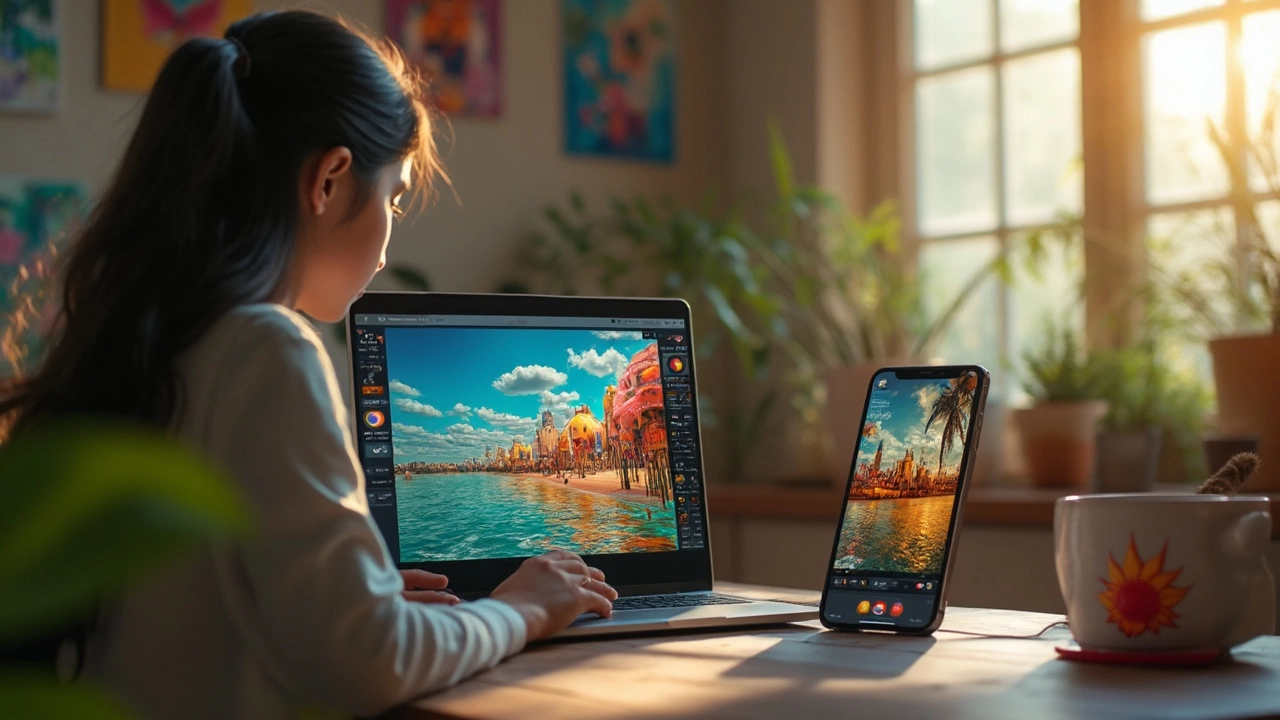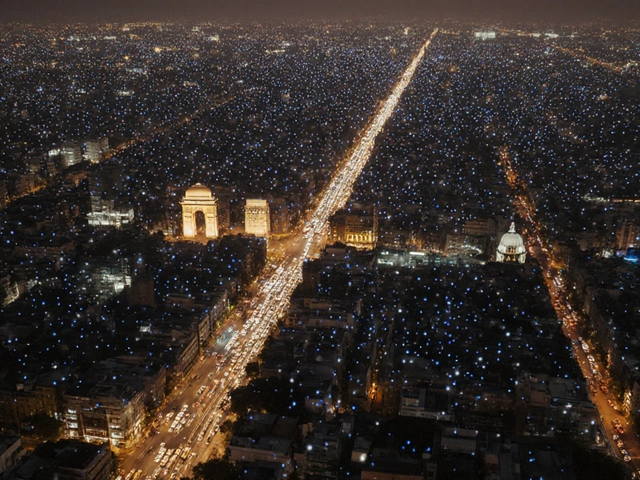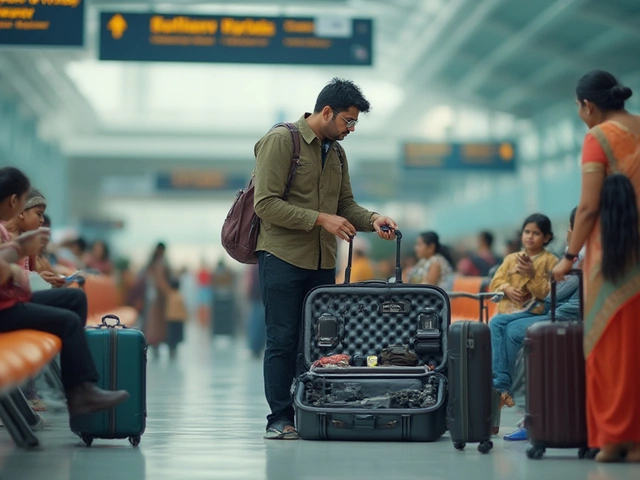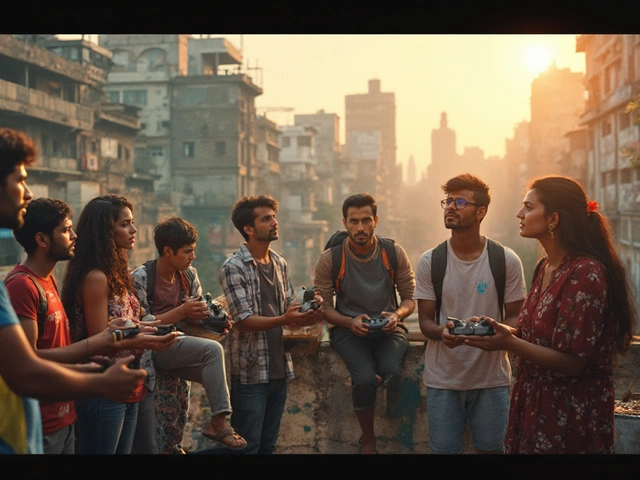Searching for a photo editing app without paying anything feels nearly impossible these days. Most apps parade as 'free' but hit you with a surprise watermark, locked features, or annoying ads just before you save your masterpiece. So what does ‘totally free’ even mean in 2025? It’s not just about downloading for zero dollars. It’s about getting all the basic editing tools, no sneaky paywalls, and actually being able to export your photos without a logo slapped across someone’s face.
If you just want to crop, adjust brightness, slap on a filter, or fix the red-eye on a vacation pic, the good news is there are solid choices out there. Some apps truly give you most core tools for nothing, especially if you don’t need pro-level stuff like advanced masking or batch edits. The trick is knowing which apps respect your time and creativity—and which ones just want to upsell you every other tap.
- What Does 'Totally Free' Actually Mean?
- The Best Actually Free Photo Editing Apps Right Now
- Avoiding Traps: Watermarks, Ads, and Hidden Fees
- Tips for Getting the Most Out of Free Editors
- When Free Isn’t Enough: Upgrading Without Regret
- Which Free App Should You Grab First?
What Does 'Totally Free' Actually Mean?
The phrase 'totally free' gets tossed around a lot in the free photo editing app world, but let’s be real—most of the time, it just means 'free to download.' That’s only the start. The catch comes in when you try to use the good stuff: filters, export options, or edits without watermarks. Some apps even let you get halfway through a project and then, boom, they want you to pay to save your photo. That’s not what anyone calls totally free.
So, what really counts as totally free these days? Here are the boxes an app should tick:
- All basic editing features (crop, rotate, filters, brightness, contrast, etc.) work with no paywall.
- You can export or save your edited photos in decent resolution—no logos or watermarks added.
- No credit card or signup required to use essentials.
- Any ads are non-intrusive and don’t mess up your workflow.
Let’s break down the types of 'free' apps out there so you know what to expect:
- Free trial: Full power upfront, but limited time—usually 7 or 14 days.
- Freemium: Basic tools unlocked, but advanced stuff or cool filters locked unless you pay.
- Genuinely free: Everything basic, no paywalls, and no nasty watermarks. Fewer bells and whistles, but you won’t get tricked.
Did you know about half of the highest-rated mobile photo apps in app stores use a freemium model? Here’s a quick look at the spread:
| Model | What You Get For Free | What Costs Money |
|---|---|---|
| Free Trial | Full features, but only for a limited time | Ongoing use after trial ends |
| Freemium | Basic edits, some filters | Premium tools, extra effects, watermark removal |
| 100% Free | All core edits, free exports | Usually, nothing, or maybe optional donations |
Long story short: if you don’t want surprise charges or random watermarks showing up on your best photo editor picks, check for these details before you invest your time. Free should mean free—no strings, no gotchas.
The Best Actually Free Photo Editing Apps Right Now
If you search “free photo editing app” on the Play Store or App Store, you’ll get slammed with flashy icons and promises. But which ones are truly free, not just free to download? Here’s a straight-up rundown of apps you can count on for solid editing—no credit card required, no sneaky watermarks on your finished pic.
- Snapseed (Android & iOS): Owned by Google, Snapseed makes the top of every list for a reason. You get a full set of tools—curves, healing brush, white balance, selective edits, even RAW support. No subscriptions, no exporting limits, zero watermarks. It’s basically the best photo editor you can get totally free, especially if you want more control than the average filter app.
- Pixlr (Android, iOS & Web): Pixlr keeps things fast and simple. You get one-tap fixes, overlays, text options, and cropping without needing to sign up or see a paywall for basic stuff. Sure, there are ads and some extra filters are paid, but you can stick with the free set and never run into a watermark.
- Polarr (Android, iOS & Web): If you like playing with color and style, Polarr’s basic features (light, color, crop, filters) don’t cost a cent. The app’s paid stuff is tucked away, and you can do a lot with the free tools before ever being nudged to pay.
- Photopea (Web): Here’s one for desktop users. Photopea feels like working in Photoshop but runs straight from your browser. All the must-have image editor basics are free, and you get layer support and PSD editing with no installs—great if you’re on a Chromebook or can’t install more software.
- Google Photos (Android & iOS): It’s not super fancy, but if you already use Google Photos to organize pics, the built-in editor covers the basics—exposure, filters, cropping, and even simple auto adjustments. No paywalls, just free core tools.
- Darktable (Desktop, Windows/Mac/Linux): For folks into RAW files and desktop editing, Darktable is a free, open-source gem. It’s like Lightroom’s little sibling—totally free, no ads, and you keep all your export quality and features.
To make picking easier, here’s a look at what’s actually free in these apps:
| App Name | No Watermark | All Key Tools | Ads? | Platform |
|---|---|---|---|---|
| Snapseed | Yes | Yes | No | Android, iOS |
| Pixlr | Yes | Yes | Yes | Android, iOS, Web |
| Polarr | Yes | Most | No | Android, iOS, Web |
| Photopea | Yes | Yes | Yes | Web |
| Google Photos | Yes | Basic | No | Android, iOS |
| Darktable | Yes | Yes | No | Windows, Mac, Linux |
Want the bottom line? Snapseed covers the most ground on mobile—download it, try the tools, and you’ll see why even pro photographers keep it in their pocket. But if you’re more about web editing or desktop work, give Photopea or Darktable a test spin. No hidden charges. No brand logos ruining your work. Just edit and share.
Avoiding Traps: Watermarks, Ads, and Hidden Fees
Think that new free photo editing app you just grabbed is a steal? Hold up—lots of these apps have sneaky ways to make money, even after they say they're 'free.' You expect a simple edit, but suddenly there’s their logo sitting in the corner, or you can’t save your image in HD unless you cough up cash. Watermarks are the classic gotcha. For example, apps like PicsArt and YouCam Perfect stick their mark on every photo unless you pay up. Even Adobe Photoshop Express, which is pretty generous, only gives watermark-free exports if you skip some features or sign up for a free Adobe account.
Next up: ads. Free apps, like Snapseed and Polish, usually avoid messing with your workflow with too many pop-ups, but others will drown you in ads after every little adjustment. Nothing’s more annoying than finally getting your selfie perfect—and then waiting for a 30-second ad to finish before you can download.
Let’s talk hidden fees. Apps love to tease cool tools behind the word 'PRO' or that little golden crown. Suddenly, smoothing skin or removing objects is locked until you subscribe. Some apps look free at the start, but as soon as you need a basic brush or save in higher resolution, it’s paywall city.
So, what can you actually do? Here’s how to avoid these common traps with photo editors:
- Check reviews before downloading—people will complain (a lot) about intrusive watermarks or non-stop ads.
- Start with safe bets like Snapseed or Pixlr—these rarely bother you with watermarks, most features are open, and ads are minimal.
- Look up the app’s privacy policy. Some "free" photo editors sell your data to make money.
- As soon as you install, edit a test photo and try saving it in different formats. If you see a watermark, delete and move on.
- Avoid apps labeling too many features as 'PRO.' Unless you like constant teasing, stick with apps that give a lot for nothing.
Here’s a quick table to spot the traps on popular apps by April 2025:
| App | Watermark on Free Plan? | Annoying Ads? | Paywalls on Core Features? |
|---|---|---|---|
| Snapseed | No | No | No |
| Pixlr | No | Mild | Rarely |
| PicsArt | Yes | Moderate | Often |
| Adobe Photoshop Express | Sometimes* | Rarely | Some features |
| Polish | No | Frequent | Some |
*Exporting with advanced edits may require a free Adobe account or payment.
Bottom line: If the app starts making your edits a hassle with logos, forced ads, or random payment walls, don’t settle. The right photo editing app is the one that lets you create and share without feeling pressured to spend a cent.
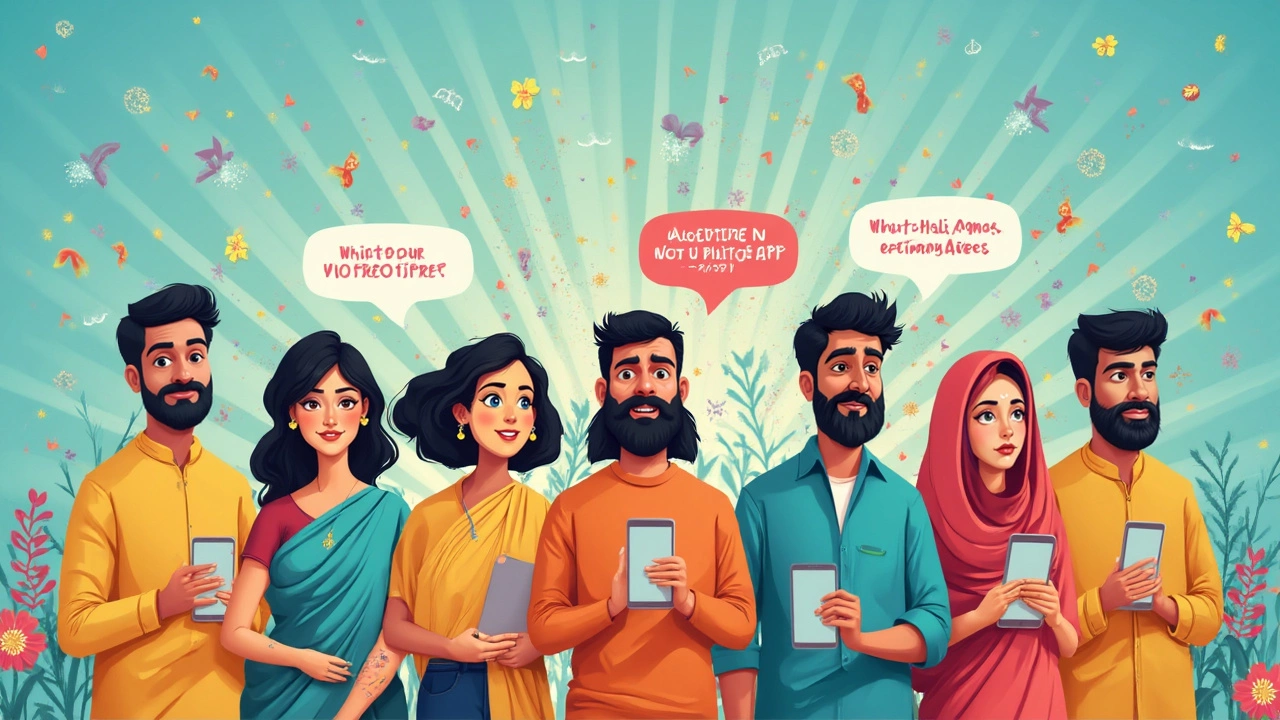
Tips for Getting the Most Out of Free Editors
There’s no reason to feel stuck with basic tools just because you picked a free photo editing app. Most free editors pack plenty of options if you know where to look. Here’s how to squeeze every drop of power out of your no-cost app and avoid the usual headaches.
First, don’t ignore the built-in tutorials and help tips. Whether you’re on Snapseed or Polish, these guides are in there for a reason—the folks behind the apps actually want your edits to look good because happy users bring more downloads (and sometimes, future buyers).
Next, get comfortable stacking edits. Instead of just applying one filter and calling it a day, use layers if your app allows it—like in Photopea or Pixlr. Stack brightness, contrast, and sharpen for a punchier pic. If your app saves “undo” steps, mess around without fear of ruining anything.
- Save multiple versions as you go. This is huge if you want to compare effects or undo mistakes further down the line.
- Take advantage of free cloud saving if your app offers it. It keeps your best photo editor projects safe and lets you edit across different devices.
- Try keyboard shortcuts on web-based editors like Photopea. Things like Ctrl+Z for undo or Ctrl+Shift+E to merge layers can save you a ton of time.
- For apps with a store, check the “freebie of the week” sections—they sometimes give out premium filters or sticker packs for free.
Ads driving you nuts? Try using the app offline. A lot of mobile photo apps show fewer or even zero ads if you’re not connected to Wi-Fi or data. Just open the downloaded app, edit your photo, and save it without that endless parade of interruptions.
And don’t ignore the web. If your phone storage is jammed or you need a more robust image editor, web-based choices like Canva, Fotor, or Polarr can seriously step up your editing game—for absolutely nothing.
| Popular Free Editors | Offline Access | Cloud Storage |
|---|---|---|
| Snapseed | Yes | No |
| Pixlr | No | Yes |
| Photopea | Yes | No |
| Canva | No | Yes |
One last thing: always keep original photos backed up. Free apps aren’t immune to crashes, and losing that perfect shot because of a random bug is a pain you don’t need.
When Free Isn’t Enough: Upgrading Without Regret
So you’ve squeezed all you can out of a free photo editing app but those paywalls keep popping up. If you’re starting to feel boxed in and want pro-level results—or just want to ditch the ads—it might be time to upgrade. But hold up, nobody wants buyer’s remorse after spending their hard-earned cash. The key is knowing exactly what you’re paying for.
First off, check what extras you actually need. Do you want better healing tools, more export formats, or premium filters? Professional photographers and content creators usually crave things like:
- RAW file support (huge for high-quality photos)
- Layer editing (think Photoshop basics)
- Batch processing (editing a bunch of photos in one go)
- Advanced brushes and retouch tools
Most people don’t need everything though. Spending $2.99 a month on Snapseed or Adobe Photoshop Express only makes sense if you’ll really use those features. A well-known review from PCMag puts it simply:
"Upgrading gives users advanced features that save time and deliver pro results, but casual shooters should make sure they’re not paying for tools they’ll never touch."
Worried about wasting your money? Look for free trials. Apps like Picsart and VSCO give you a week or even a month to test all the premium features without risk. And for what it’s worth, Adobe often throws in bonus storage if you upgrade—handy if you’re juggling lots of images.
| Popular Editor | Monthly Price | Free Trial? |
|---|---|---|
| Adobe Photoshop Express | $4.99 | 7 Days |
| VSCO | $7.99 | 7 Days |
| Picsart | $5.99 | 7 Days |
If you go premium, use it for everything you shoot: social media, work, family events. That’s how you guarantee you’re not letting it collect digital dust. And hey, sometimes peace of mind—no ads, no watermarks, everything unlocked—is well worth the price.
Which Free App Should You Grab First?
If you're after a free photo editing app that actually gives you true value, Snapseed is the first name that pops up most of the time. This app is made by Google and, shockingly, doesn’t require you to pay for basic or even some advanced features. You can use core editing tools like tune image (for brightness, contrast, warmth), cropping, healing, and a whole bunch of modern filters without ever seeing a paywall. It’s also watermark-free and there are no ads clogging up your workspace.
Another solid option is PhotoScape X, especially if you’re editing on a laptop or desktop. The free version gives you batch editing, GIF creation, and even some collage templates. Most stuff is unlocked from the start, though some super-advanced features are premium—but for the usual stuff, you’re covered. For those who like open-source solutions, GIMP (GNU Image Manipulation Program) is about as close as you’ll get to a no-strings-attached image editor that rivals pricey desktop software. The learning curve is a bit steeper, but you’ll find tons of YouTube tutorials to help out.
Want to see how they compare at a glance? Check out the basics:
| App | Platform | Watermark-Free? | Key Free Features |
|---|---|---|---|
| Snapseed | iOS, Android | Yes | Selective editing, healing, filters, raw editing |
| PhotoScape X | Windows, Mac | Yes | Batch edit, frames, GIF creation, collage |
| GIMP | Windows, Mac, Linux | Yes | Layer support, advanced tools, plug-ins |
If you’re just getting started or want something dead simple on mobile, Snapseed is the one to grab first. For those wanting pro-level editing on computer, try GIMP—just be ready to watch a tutorial or two. PhotoScape X sits in between: more features than Snapseed, easier than GIMP. None of these will annoy you with watermarks or sudden charges. Download one, mess around, see if you vibe with the controls. If it doesn’t fit, try the next one. At least you won’t be out of pocket or stuck staring at a watermark on your favorite selfie.
